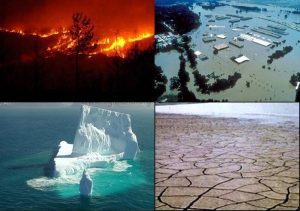Climate change is an undeniable reality that poses significant challenges for communities, ecosystems, and economies worldwide. As the global climate continues to shift, the need for effective adaptation strategies has become more urgent. This article explores various climate change adaptation strategies, focusing on resilience, sustainability, and community engagement.
Understanding Climate Change Adaptation

Climate change adaptation refers to the process of adjusting to current or expected changes in climate and its effects. The goal is to minimize harm and exploit potential benefits. Unlike mitigation, which aims to reduce greenhouse gas emissions, adaptation focuses on managing the risks and impacts of climate change.
Key Adaptation Strategies
1. Infrastructure Resilience
One of the primary adaptation strategies is enhancing the resilience of infrastructure. This involves designing and upgrading buildings, roads, bridges, and other critical infrastructure to withstand extreme weather events such as hurricanes, floods, and heatwaves. For instance, coastal cities are investing in sea walls and storm surge barriers to protect against rising sea levels.
2. Ecosystem-Based Adaptation
Ecosystem-based adaptation (EbA) leverages natural systems to reduce the impacts of climate change. This approach includes the restoration of wetlands, mangroves, and forests, which can act as natural buffers against storms and flooding. Additionally, EbA promotes biodiversity and enhances ecosystem services such as water purification and carbon sequestration.
3. Water Resource Management
Climate change significantly impacts water availability and quality. Effective water resource management strategies are essential to ensure a sustainable supply of clean water. Techniques such as rainwater harvesting, improved irrigation practices, and the development of drought-resistant crops can help communities adapt to changing precipitation patterns and prolonged droughts.
4. Urban Planning and Development
Urban areas are particularly vulnerable to climate change due to their high population density and infrastructure concentration. Adaptation strategies in urban planning include the creation of green spaces, the implementation of sustainable drainage systems, and the development of energy-efficient buildings. These measures can help reduce the urban heat island effect, manage stormwater, and lower energy consumption.
5. Agricultural Adaptation
Agriculture is highly sensitive to climate variability. Farmers can adopt various adaptation strategies to cope with changing conditions. These include diversifying crops, adopting climate-smart agricultural practices, and utilizing technology for precision farming. Additionally, improving soil health through organic farming and agroforestry can enhance resilience to climate impacts.
6. Community-Based Adaptation
Community-based adaptation (CBA) emphasizes the involvement of local communities in developing and implementing adaptation strategies. This approach recognizes that local knowledge and practices are crucial for effective adaptation. CBA initiatives often focus on capacity building, education, and the empowerment of vulnerable groups to participate in decision-making processes.
7. Policy and Governance
Effective adaptation requires robust policies and governance structures. Governments play a critical role in creating enabling environments for adaptation through legislation, funding, and coordination. Integrating climate considerations into national and local policies, planning, and budgeting processes is essential for building adaptive capacity.
Case Studies of Successful Adaptation
The Netherlands: Living with Water
The Netherlands has long been a pioneer in water management due to its low-lying geography. The country’s “Room for the River” program is a notable example of successful adaptation. Instead of solely relying on dikes and barriers, the program involves relocating dikes, creating floodplains, and designing urban areas to accommodate floodwaters. This approach not only enhances flood protection but also improves the ecological quality of riverine areas.
Bangladesh: Community-Based Adaptation
Bangladesh, one of the most climate-vulnerable countries, has implemented numerous community-based adaptation projects. In coastal regions, communities have adopted floating gardens to grow crops during the monsoon season. These gardens, made from water hyacinth and bamboo, float on floodwaters and provide a reliable source of food and income. Additionally, the construction of raised housing and cyclone shelters has significantly reduced the loss of life and property during extreme weather events.
Australia: Water Resource Management

Australia’s Murray-Darling Basin is a critical agricultural region that has faced severe droughts. The Basin Plan, implemented by the Australian government, aims to balance water use between agriculture, communities, and the environment. Measures include water trading, investment in water-saving technologies, and the restoration of wetlands. These efforts have improved water efficiency and increased the resilience of the Basin’s ecosystems and communities.
Challenges and Opportunities
While significant progress has been made in climate change adaptation, several challenges remain. These include limited financial resources, insufficient data and monitoring, and the need for greater coordination among stakeholders. Additionally, adaptation efforts must address social inequalities to ensure that vulnerable populations are not left behind.
However, there are also numerous opportunities. Advances in technology, such as climate modeling and early warning systems, can enhance adaptive capacity. International cooperation and knowledge sharing can facilitate the dissemination of best practices. Moreover, integrating adaptation with sustainable development goals can create synergies that benefit both people and the planet.
Conclusion
Climate change adaptation is a multifaceted and dynamic process that requires a comprehensive and inclusive approach. By investing in resilient infrastructure, leveraging natural systems, managing water resources, and engaging communities, societies can better navigate the uncertainties of a changing climate. Policymakers, researchers, and practitioners must continue to collaborate and innovate to develop and implement effective adaptation strategies. As we move forward, the collective efforts to adapt to climate change will be crucial in safeguarding our future and ensuring the well-being of generations to come.












